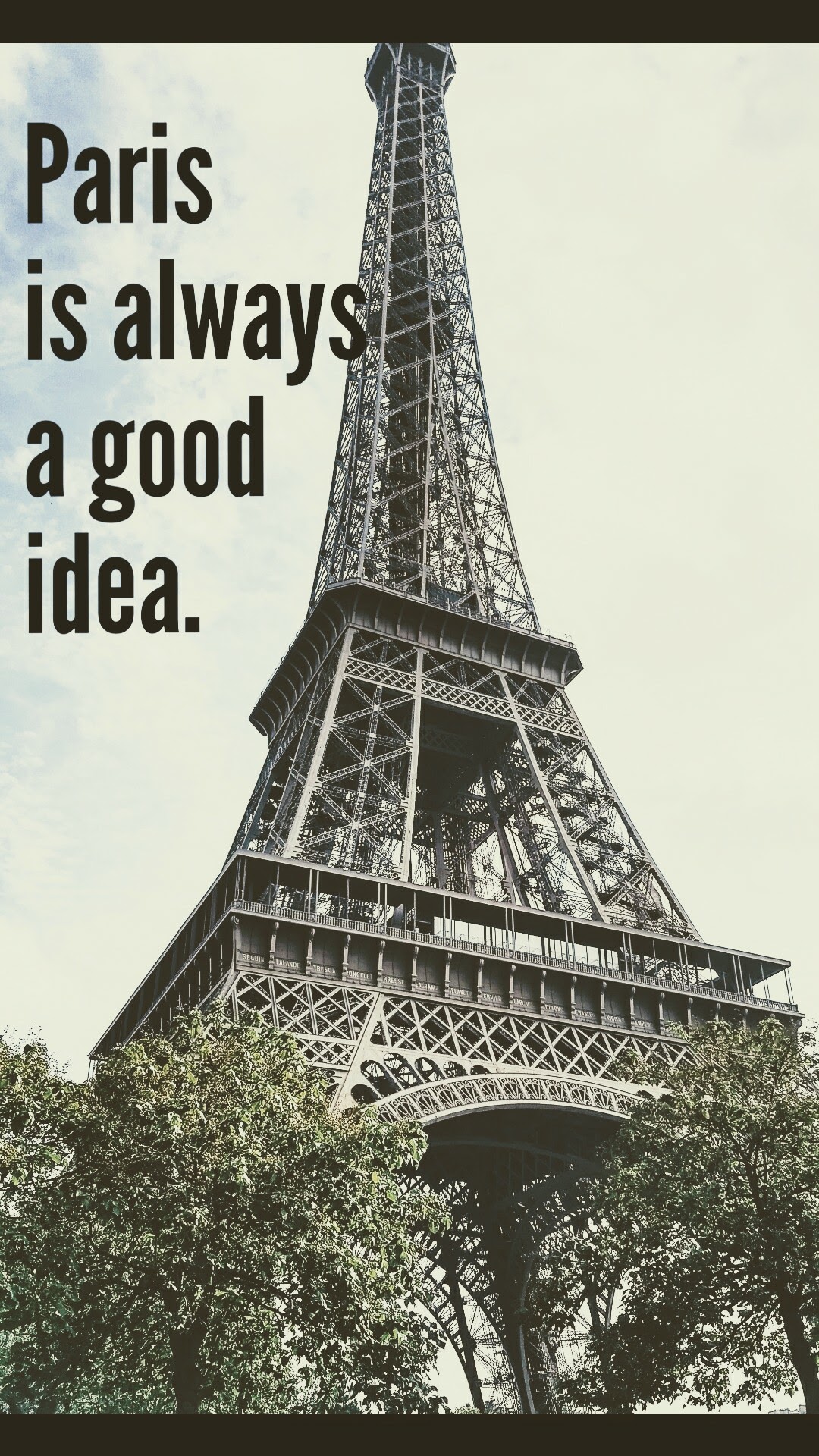Day: 16-17 Km Travelled: 745.17km Steps: 20,259
September 22nd – 23rd, 2017
This famous saying by the great Audrey Hepburn might ring true for some, but it did not for me. I had visited Paris 4 years prior and while I had enjoyed finally laying eyes on all the famous sights, I was in no hurry to return. I remembered Paris as cold and grey, rainy and damp, Parisians exceptionally rude and often looked down on my uniquely Franco-Ontarian accent (ie. I ordered something off the menu in French and they would pause, before answering me in English. I would continue in French, they’d look down at me and continue in English. And so on it went. Every. Single. Time.)
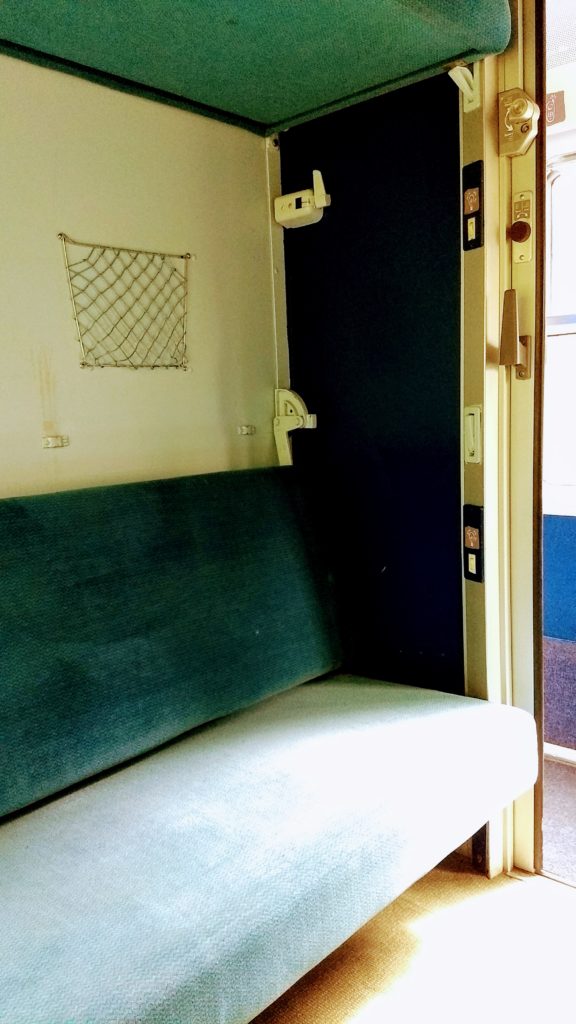
I was perfectly content to use Paris as my international hub in and out of Europe, and not spend any considerable amount of time there. However, the opportunity arose to meet up with friends for a week in Paris. Furthermore, friends of theirs very gracious and generously agreed to host us in their home. How could a girl say no? (Spoiler: she couldn’t and didn’t!)
I chose to forgo the ease of the TGV for the budget friendlier option of the intercity train. What exactly does that mean you ask? The TGV has bigger seats with more leg room; the trains are newer and often cleaner; there’s a bar on board for refreshments and nourishment; some lines have free wifi access and the time spent in the train is cut in half as the travel speed is 300km/hr. The intercity trains are typically older and somewhat dingy; this articular train was a sleeper train meaning there were no individual seats – instead it was 2 ‘benches’ one in front of the other in an individual compartment where 6 people + their luggage spend the journey; and the ride would take almost 8hrs to Paris. However, as it was significantly cheaper, I didn’t even hesitate. My journey from Roumens had begun at 06h30 that morning and I finally arrived at my destination in Paris around 16h00. It was quite the day!
The apartment we were staying in was in Paris’ 7e arrondissement, merely steps away from Napoleon’s tomb at the Musée des Invalides. Our hosts could not have been more gracious nor welcoming. I was greeted with a tour of our accommodations & surrounding area and a sumptuous supper on the table. Paris was off to a good start!
As a new day dawned, so did my excitement for today’s agenda: The Rodin Museum! Having always preferred sculptures to paintings, I was gleefully anticipating this visit. And boy, did it not disappoint. Situated next to Les Invalides, the museum features an outdoor garden interlaced with sculptures as well as an indoor gallery. The Rodin Museum features the works of the French sculptor, Auguste Rodin (1840 – 1917). Under appreciated and often criticized during his lifetime, Rodin gained post-mortem fame as so many great artists do. The sunlight illuminated the sculptures, as if a spotlight was shining down on each from above. From The Thinker – arguably his most recognized piece – to The Kiss, to The Age of Bronze, dozens of his masterpieces were on exhibit for all to gaze upon in awe.
 L’Hotel Biron, site of The Rodin Museum, Paris
L’Hotel Biron, site of The Rodin Museum, Paris
I could wax poetic about the genius that is Rodin, however I will let his works speak for themselves. To capture the immense beauty in details and the intricacies of his pieces in a photograph is not an achievable task, however I humbly attempt to convey to you the wondrous sights my eyes did behold on that sunny day. Even if one does not enjoy sculptures, the attention to detail – anatomy, pose, etc – is a wonder and can be enjoyed by all!

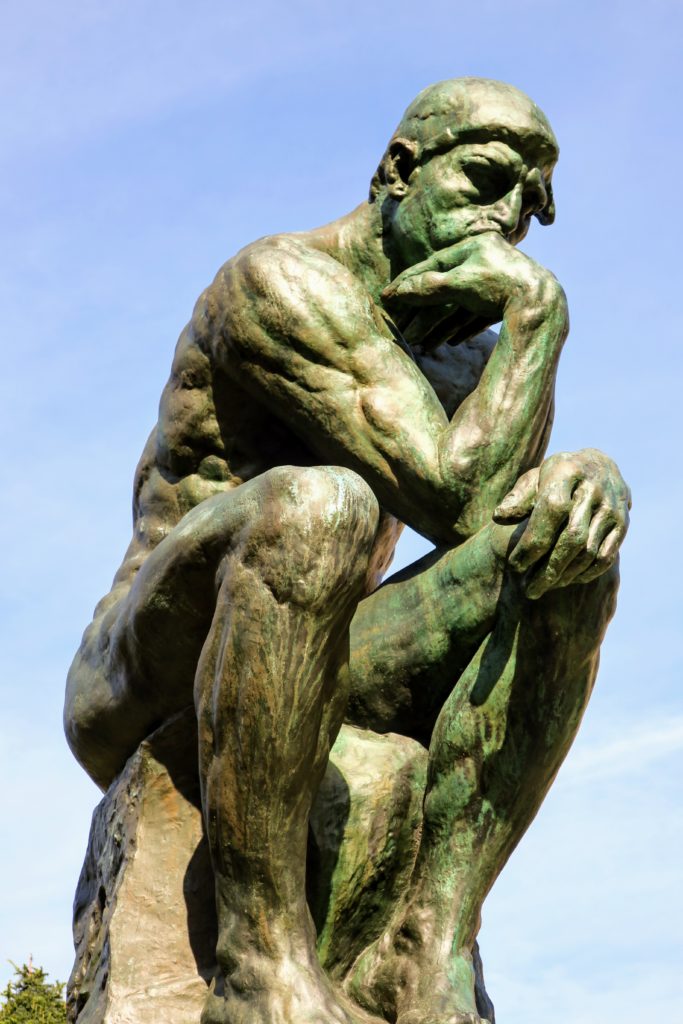 The Thinker (1903) – The detail in the musculature is outstanding!
The Thinker (1903) – The detail in the musculature is outstanding!
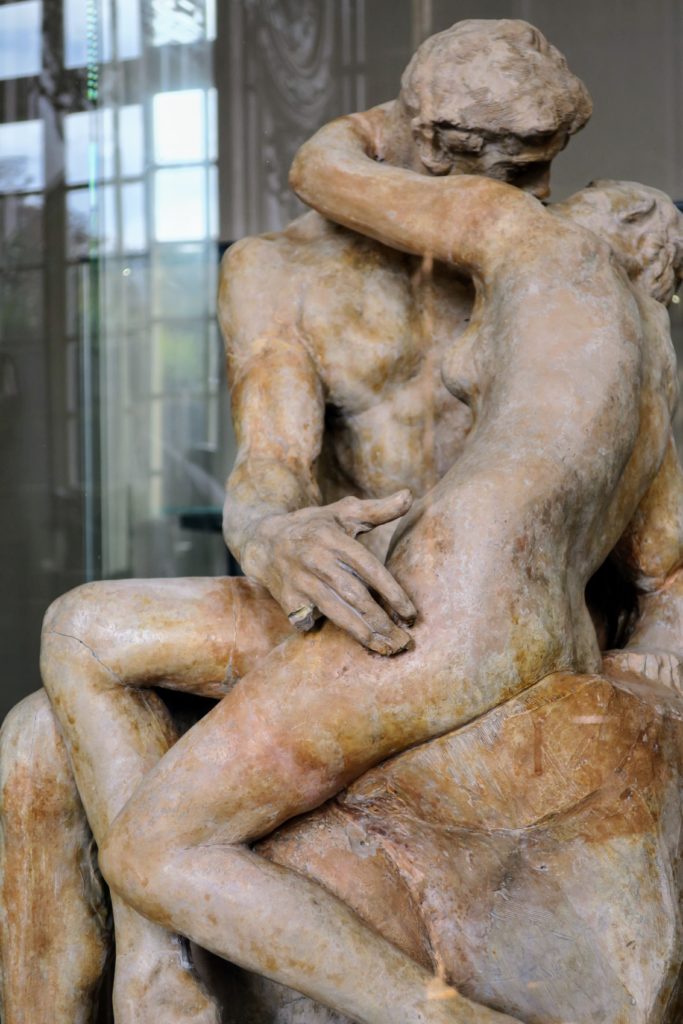
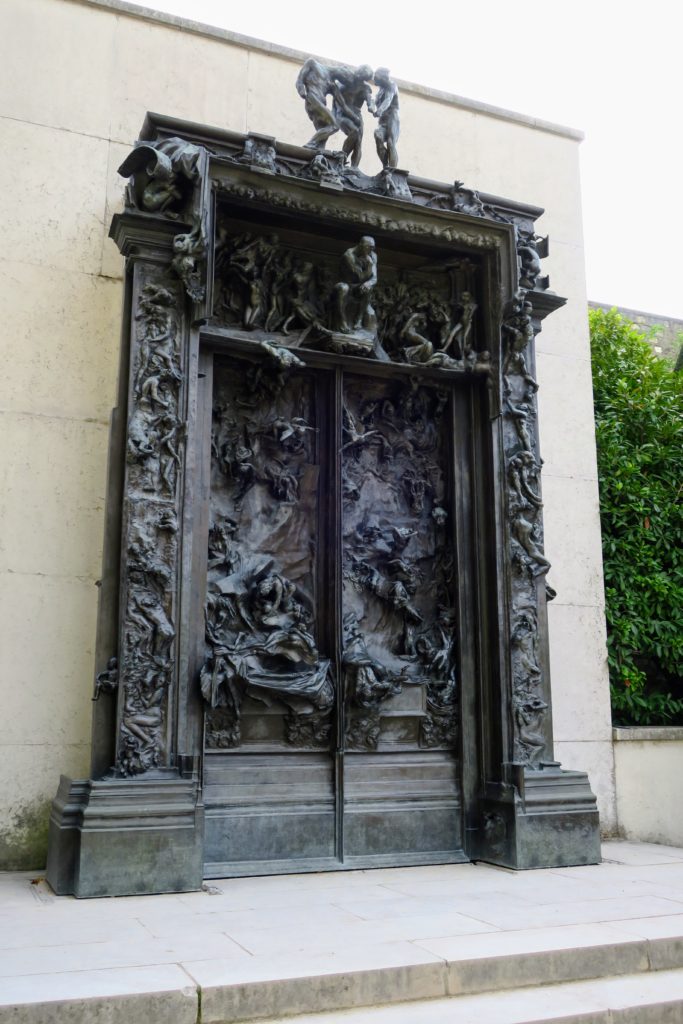
The Kiss (1882) The Gates of Hell (1890)
 The Age of Bronze (1877)
The Age of Bronze (1877)
After revelling in such beauty for the better part of the morning, it was time to do what all good Parisian visitors are ought to do: shop! As a long-term traveller, I did not have the luxury to indulge in Paris’ finest, however I did have a specific purchase in mind: buy a new purse! Now, I can imagine what some of you are thinking; let me reassure you, this purchase was a necessity. As a new backpacker, I had decided to forgo my regular purses and bring along a daypack and an itty bitty purse for daily use. However, after only 2 days on the road, I had quickly found myself struggling to fit my glasses, my phone, my passport and my wallet in the bag, let alone anything else I might need during a day of exploring. I had meticulously researched for the last 2 weeks, desperate to find something that would meet my 3 non-negotiable criteria: 1) must be compact as to take up the least amount of real estate when not in use; 2) must be multipurpose, preferable a tote / cross body combination and 3) must be dirt cheap. This lead me to a store in Paris, newly opened, which was, ironically, a Canadian brand! I also picked up an ultra-thin down coat while I was there – what can I say? I was tired of being cold and somewhat apprehensive about the upcoming winter portion of my trip. This purchase led to the following with the sales clerk:
Me: Would you happen to know if this coat is rated to a certain temperature, such as 0 or -10, etc?
Clerk: Well, I don’t know exactly. However, the company is from Montreal, Canada
and it’s pretty cold there so I’m sure it’ll keep you warm.
Me; *pause*. Indeed.
My last stop of the day, was Le Musée de l’Armée, in the heart of L’Hôtel National des Invalides, a national historic site. During my previous time in Paris, I remembered going by the museum in a bus, likely on my way to visit a more well-known Parisian site. This time, the museum came highly recommended by our host and as it was at our doorstep, how could I pass it up? Let me tell you, I’m glad I didn’t! L’hotel des Invalides and its accompanying war museum has to be one of Paris’ most wrongly overlooked sites. Not only is it the location of Napoleon’s final resting place, but it houses an impressive collection of war memorabilia from the time of Louis VIX to Charles de Gaulle.
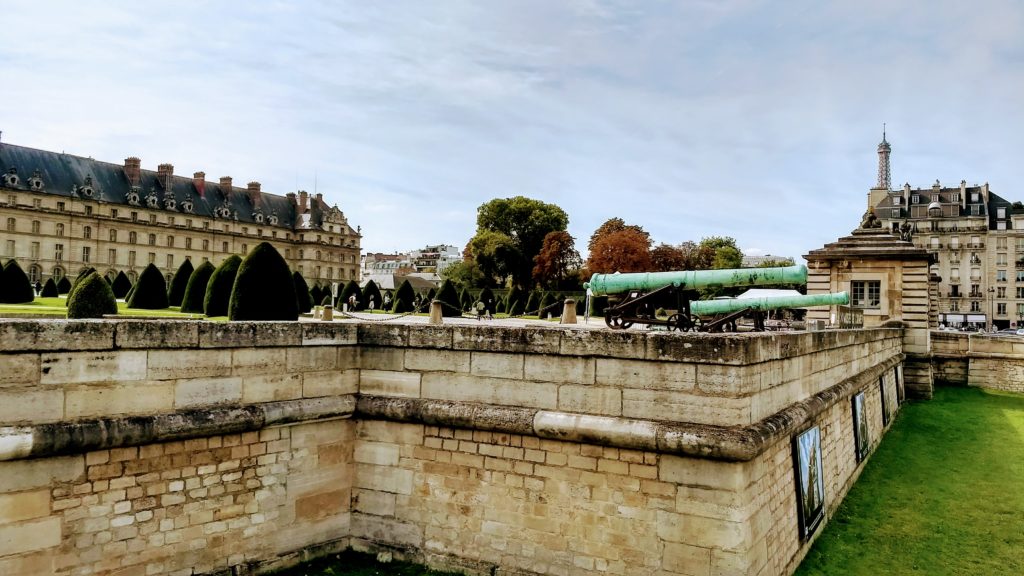
In 1670, Louis XIV created l’Hôtel des Invalides to welcome his wounded soldiers and war veterans as up until that time, no such facility existed. A museum dedicated to artillery and war was also created around the same time. During Napoleon’s reign, the on site church, L’Église Saint-Louis was transformed into a national military pantheon. In 1840, the tomb of the Emperor is placed under the magnificent dome.
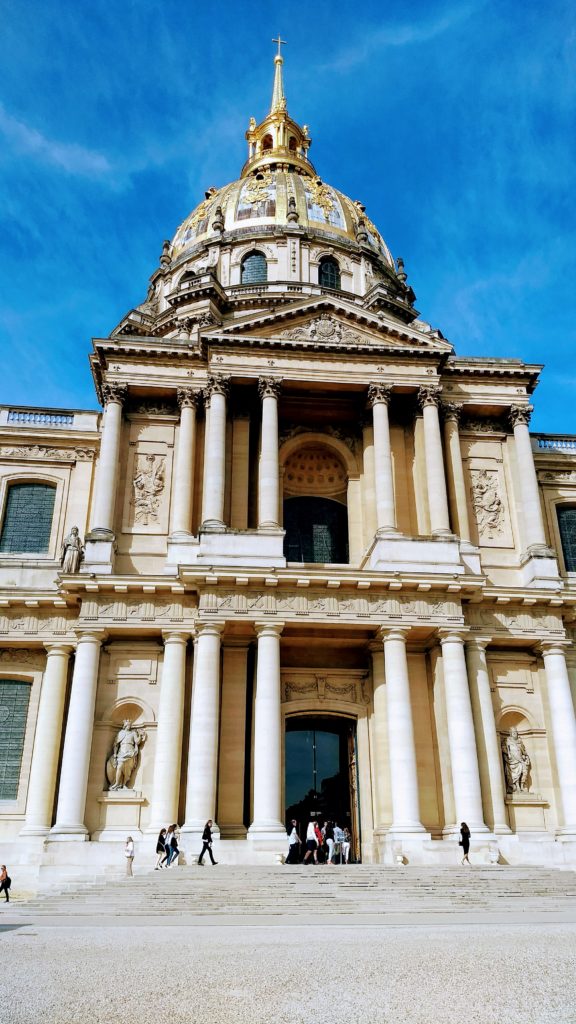
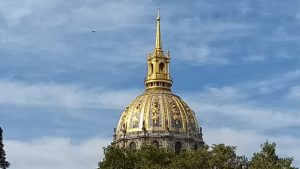
The magnificent gilded roof

Napoleon I’s tomb in l’Église du Dome, composed of 6 different coffins.
L’Eglise du Dome was completed in 1706. Originally created as a ‘Chapelle Royale’, aristocrats would attend religious services here, separated from the masses of sick and injured soldiers by both architecture and grandeur. Once it was decided that it would also house Le Petit Corporal’s tomb, it took 20 years to excavate and construct the crypt. It was therefore not the Emperor’s first resting place but his final one. Today, the tomb is a popular tourist attraction and visitors are often oblivious to the existence of the museum merely steps away. Our host told me in passing: People come to visit Napoleon and then discover there’s a museum.
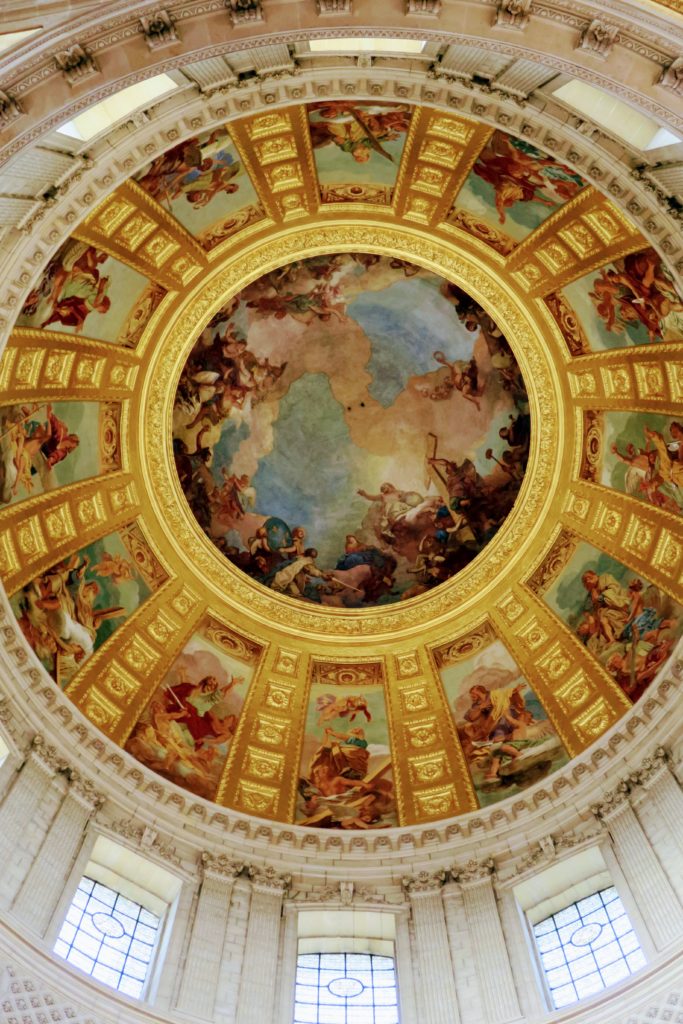

The spectacular altar of the Dome The painted inside of the Dome
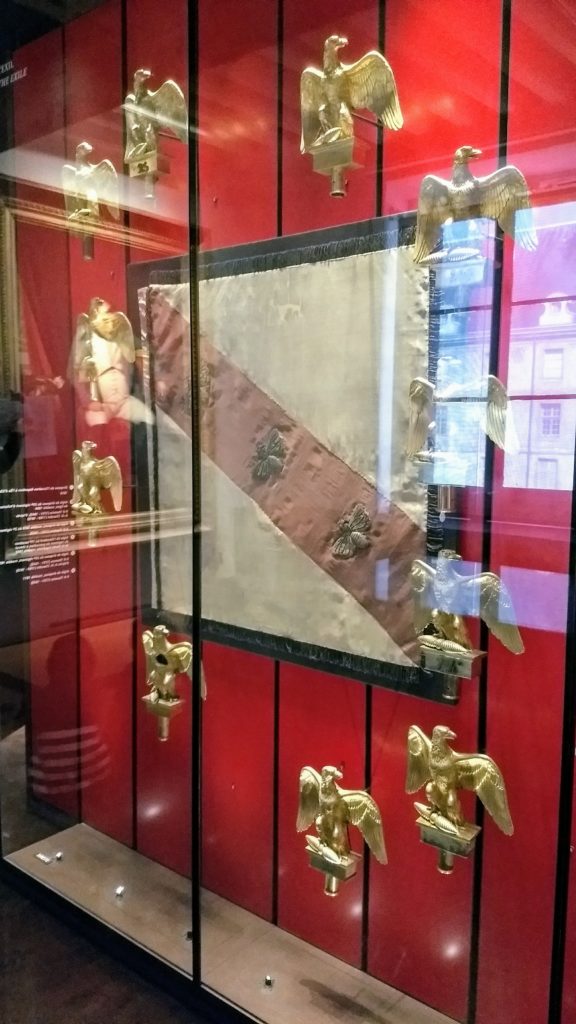
One of my favourite discoveries at Le Musée de l’Armée was Napoleon’s French Imperial Eagles. A highly significant symbol of La Grande Armée during the Napoleonic Wars, it was mounted on a staff and carried into battle as a standard (similar to the British’s use of ‘colours’). To lose one in battle would bear the regiment enormous shame as they were sworn to defend it to the death. For the enemy, the capture of an eagle was a most celebrated event and would be proudly displayed – these captured eagles can still be viewed in various museums across Europe such as in Scotland and England.
Another quirky discovery: the Emperor’s taxidermied horse. Vizir was not Bonaparte’s most famous horse but he was his last one, having followed him into exile to Elba
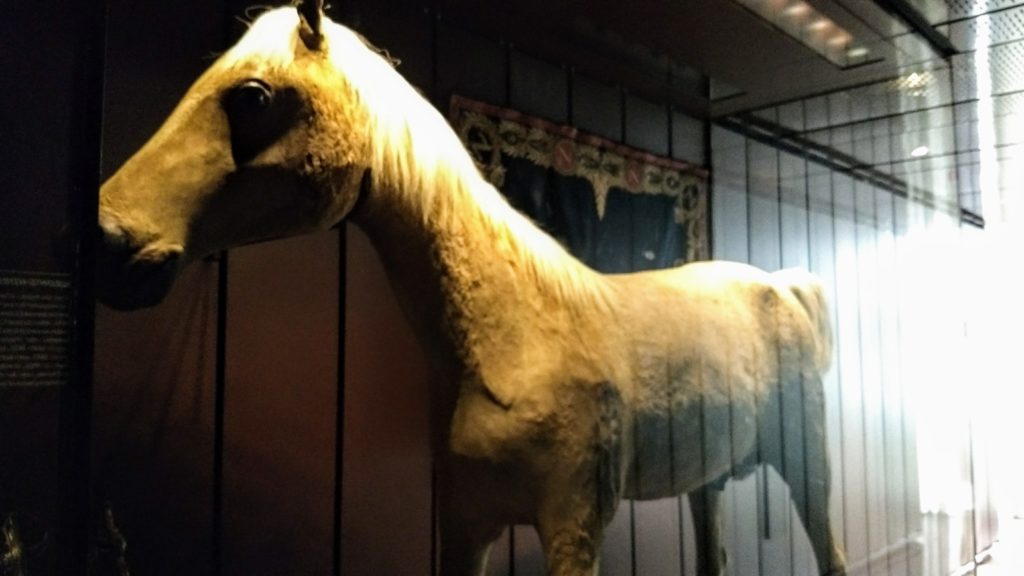
There is so much more to discover at Les Invalides, from a special exhibit on the life of the General de Gaulle (Historial Charles de Gaulle), to Les Cabinet Insolites (one of them dedicated to military musical instruments), to wonderful displays chronically WWI & WWII. It’s quite easy to spend an entire day (or two) lost amongst history!
 Enjoying the sunshine on a wonderful first day in Paris!
Enjoying the sunshine on a wonderful first day in Paris!
x
